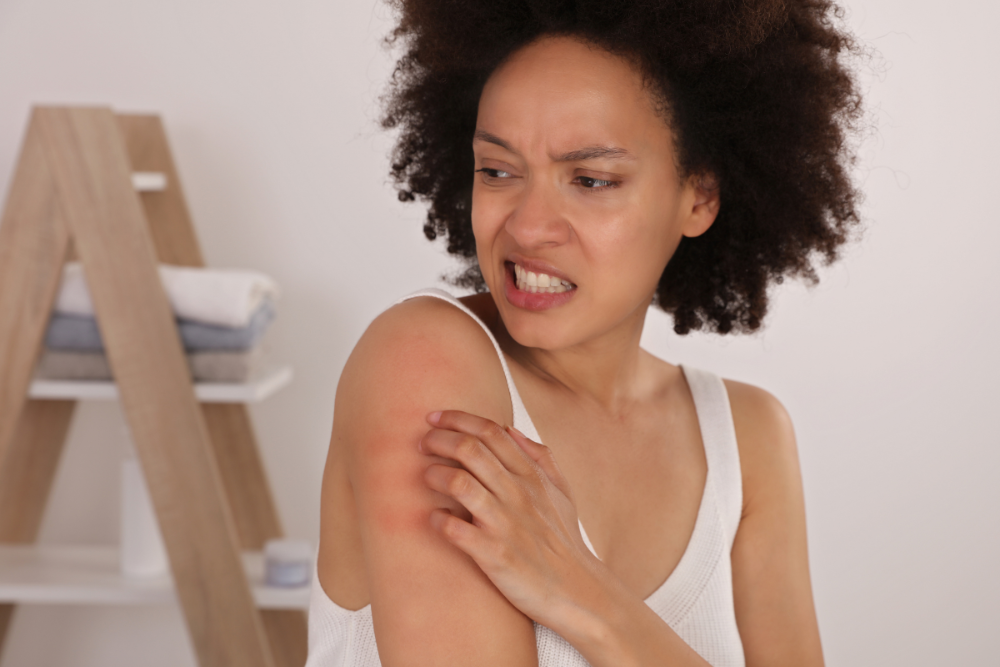Many people wonder whether HSV-1, commonly known as herpes simplex virus type 1, is considered a sexually transmitted infection (STI). By exploring how HSV-1 spreads, how common it is, and what it means for sexual health, you can gain a better understanding of this question. Let’s delve into the facts and unravel the complexities surrounding HSV-1 and its connection to sexual transmission.
What is Herpes Simplex Virus (HSV-1)?
HSV-1 is a common viral infection that affects a large portion of the population. It primarily manifests as oral herpes or cold sores, appearing as small, fluid-filled, painful blisters on or around the lips and mouth. Symptoms can also include swollen lymph nodes, flu-like symptoms, and body aches. While HSV-1 is typically associated with oral outbreaks, it can also cause genital herpes through oral-genital contact.
The virus is highly contagious and can be transmitted through direct contact with the cold sores or saliva of an infected individual. This can occur through activities like kissing, sharing utensils or personal items, or engaging in oral sex. It’s important to note that HSV-1 can be transmitted even when there are no visible sores, as the virus can still be present and contagious. Understanding the basics of HSV-1 transmission is crucial in taking preventive measures and seeking appropriate medical care.
Diagnosed with HSV-1? Treating HSV-1 is easy with hub.health. Simply answer a few basic health questions, and our medical team will review and prescribe the best treatment for you.
What You Need to Know About Sexually Transmitted Infections (STIs)
When it comes to sexual health, understanding STIs is essential. STIs, or sexually transmitted infections, can be passed from one person to another through sexual activity. The most common modes of transmission include unprotected vaginal, anal, or oral sex with a person who carries the herpes virus. It’s important to note that some STIs can also be transmitted through other means, such as sharing needles or during childbirth.
HSV-1 vs. HSV-2: Spotting the Differences
When it comes to herpes simplex viruses, it’s important to distinguish between HSV-1 and HSV-2. While they both belong to the same family, they have some key differences. HSV-1 is commonly associated with oral herpes infection, causing cold sores or fever blisters around the mouth and lips. On the other hand, HSV-2 is primarily linked to genital herpes, resulting in sores or blisters in the genital or anal areas. However, it’s important to note that both types can infect either location.
How is HSV-1 Transmitted?
The primary method of HSV-1 transmission is through direct contact with the sores or saliva of a carrier. One common transmission mode is oral-to-oral contact, such as kissing, sharing utensils, or engaging in activities involving contact with the mouth. This is why HSV-1 is often associated with oral herpes or cold sores.
It’s important to note that HSV-1 can also be transmitted through non-sexual means. For instance, sharing personal items like lip balm, towels, or razors with an infected person can potentially spread the virus. Additionally, it’s possible for mothers with genital herpes to transmit the infection to their newborns during childbirth. This is known as neonatal herpes.
While sexual contact can lead to the transmission of HSV-1, it is more commonly associated with HSV-2, also known as genital herpes. However, it’s important to understand that both cold sores and genital herpes can be caused by either HSV-1 or HSV-2, as they can infect both body areas.
By exploring the primary ways HSV-1 is spread, particularly through oral-to-oral contact and non-sexual means, you can better understand the importance of practising good hygiene, avoiding direct contact with active sores, and maintaining open communication with partners. These preventive measures can help reduce the risk of HSV-1 transmission and promote overall sexual health and well-being.
Debunking the STI Myth
It’s time to address a common misconception surrounding HSV-1 – the belief that it is solely a sexually transmitted infection. While it’s true that HSV-1 can be transmitted through sexual contact, it’s important to recognise that it can also be acquired through other means. In fact, oral-to-oral contact is one of the primary routes of HSV-1 transmission. This means that a simple kiss or sharing a drink with a person who carries the virus can potentially spread the virus. HSV-1 is not limited to sexual activity alone.
Moreover, it’s important to note that not all cases of HSV-1 are acquired through intimate contact. Many people are infected with HSV-1 during childhood through innocent activities like sharing utensils or receiving affectionate kisses from family members who have the virus. In these cases, the transmission occurs in a non-sexual context.
By shedding light on these alternative routes of HSV-1 transmission, we can debunk the myth that HSV-1 is exclusively an STI. Understanding the various ways the virus can be acquired and transmitted to promote accurate information and reduce the stigma surrounding HSV-1 is essential. Remember, open communication, practising good hygiene, and avoiding direct contact with active sores can help prevent the spread of HSV-1, regardless of whether it is acquired through intimate or non-sexual contact.
Factors Affecting HSV-1 Transmission
Let’s look at the factors that can influence the chances of spreading the HSV-1 virus.
Active Outbreaks
The risk of transmitting HSV-1 is highest when visible sores or blisters are present. During an active cold sore outbreak, the concentration of the virus is higher, making transmission more likely.
Direct Contact
Close personal contact plays a significant role in HSV-1 transmission. Activities such as kissing, sharing utensils, or engaging in oral-genital contact can facilitate the spread of the virus from one person to another.
Asymptomatic Shedding
Even without visible sores, HSV-1 can still be shed and transmitted. This is referred to as asymptomatic shedding. It means that someone with HSV-1 can unknowingly spread the virus to others, even without experiencing noticeable or mild symptoms.
Immune System Health
The state of a person’s immune system can affect HSV-1 transmission. A weakened immune system may increase the risk of outbreaks and shedding due to factors like stress, illness, or certain medications.
Viral Load
The viral load, or the amount of the virus in the body, can impact transmission. Those with a higher viral load may have a greater potential to spread HSV-1 to others.
Preventing HSV-1 Transmission
When it comes to minimising the risk of HSV-1 transmission, simple strategies can be followed. You can promote a safer and healthier environment by incorporating these practices into daily life.
Open Communication
It’s important to have open and honest conversations with partners about sexual health and any history of herpes simplex virus infection. Apart from helping to prevent oral andThis helps create an atmosphere of trust and allows for informed decision-making regarding intimate contact.
Avoiding Direct Contact
During an active outbreak of mild or severe symptoms, it’s important to avoid direct contact with cold sores or herpes lesions. This includes refraining from activities like kissing, sharing utensils, or engaging in oral-genital contact until the outbreak has healed.
Practising Good Hygiene
Maintaining good personal hygiene can help reduce the risk of HSV-1 transmission. Washing hands regularly, especially after contact with active outbreaks or saliva, can minimise the potential spread of the virus.
Using Protection
While condoms and dental dams may not completely protect against HSV-1 transmission, they can still offer some protection during sexual activity.
Knowing Your Status
Getting tested for HSV-1, especially if you have a history of symptoms or potential exposure, can help you make informed decisions about your sexual health and take appropriate precautions.
Avoiding Risky Behaviours
Engaging in activities that may increase the risk of HSV-1 transmission, such as sharing personal items like lip balms or razors, should be avoided.
Prevention is key when it comes to HSV-1 transmission. By incorporating these simple strategies and emphasising the importance of open communication and how to have sex with herpes safely, you can take control of your sexual health.
Testing and Diagnosis for HSV-1
If you suspect you may have been exposed to the virus or are experiencing symptoms of an initial herpes infection, it’s important to seek medical advice and consider getting tested. Here’s an overview of the testing options and the importance of consulting healthcare professionals:
Medical Consultation
The first step is to schedule a visit with a healthcare professional, such as a general practitioner (GP) or a sexual health clinic. They can assess your symptoms, provide guidance, and recommend appropriate testing.
Viral Culture
A viral culture involves collecting a sample from an active sore or blister and testing it in a laboratory. This test can determine whether HSV-1 is present and confirm the diagnosis.
Polymerase Chain Reaction (PCR) Test
PCR testing detects the genetic material (DNA) of the HSV-1 virus in a sample, such as a swab from an active sore or blister. It offers a highly sensitive and specific method for diagnosing HSV-1.
Blood Tests
Blood tests, such as serological tests, can determine the presence of antibodies to HSV-1. A herpes blood test can be helpful in cases with no visible symptoms of genital herpes or if a person wants to know their overall HSV-1 status.
A healthcare professional can guide you through the testing process, provide accurate information, and offer effective herpes treatment options. Early detection and proper management of HSV-1 can help prevent the spread of the virus and manage symptoms effectively.
Diagnosed with HSV-1? Treating HSV-1 is easy with hub.health. Simply answer a few basic health questions and our medical team will review and prescribe the best treatment for you.





